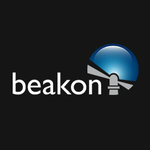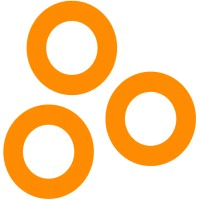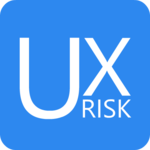Description

Beakon

ClearRisk
Comprehensive Overview: Beakon vs ClearRisk
Beakon and ClearRisk are both companies that provide software solutions aimed at risk management and related activities. Below is a comprehensive overview of both:
Beakon
a) Primary Functions and Target Markets:
- Primary Functions: Beakon offers an integrated software platform that focuses on health, safety, environment, and quality (HSEQ) management. It includes modules for incident management, safety management, compliance management, contractor management, and training management. The platform aims to streamline processes and improve safety and compliance outcomes for users.
- Target Markets: Beakon primarily targets industries that require stringent safety and compliance measures. This includes sectors such as construction, mining, manufacturing, logistics, and government operations. Organizations that manage large numbers of contractors and employees in high-risk environments are typical users.
b) Market Share and User Base:
- Beakon's market share is niche-focused, primarily catering to industries with extensive safety and compliance needs. It may not have as large of a user base as some global risk management software companies but holds significant presence in specific industries in regions like Australia and parts of Asia-Pacific.
c) Key Differentiating Factors:
- Customization: Beakon offers highly customizable modules, allowing organizations to tailor the platform to specific needs.
- Contractor Management: Emphasizes contractor management through robust features that ensure compliance and safety, which is critical in industries reliant on contract workers.
- User Experience: It offers a user-friendly interface that integrates a wide range of safety and compliance needs into a single platform.
ClearRisk
a) Primary Functions and Target Markets:
- Primary Functions: ClearRisk focuses on risk management solutions that primarily include risk reporting, claims management, and analytics. Their software helps organizations manage risks, develop better risk mitigation strategies, automate claims reporting, and improve overall risk visibility through analytics.
- Target Markets: The target market for ClearRisk includes insurance companies, municipalities, and medium to large enterprises that require robust risk management and claims handling capabilities. It aims to serve sectors where risk reporting and analytics are critical components.
b) Market Share and User Base:
- ClearRisk has a strong presence in North America, particularly in serving municipalities and insurance companies. While it may not have the global reach of some competitors, it does hold a significant share in the sectors it serves, primarily due to its specialized modules and focus.
c) Key Differentiating Factors:
- Risk Analytics: ClearRisk provides advanced analytics capabilities, allowing organizations to gain insights and make more informed decisions regarding risk management.
- Claims Management: The software excels in claims management features, streamlining the process, which can be particularly beneficial to insurance companies.
- Ease of Integration: ClearRisk often highlights the ease of integration with other business systems as a critical value proposition, allowing for smoother adoption and data management.
Comparative Overview
- Market Share and User Base: Beakon and ClearRisk both cater to specific niches within the broader risk management industry, with Beakon focusing more on HSEQ management and ClearRisk on risk reporting and analytics. Neither dominates the market globally, but both hold strategic positions within their targeted sectors and regions.
- Differentiating Factors: Beakon stands out for its comprehensive safety and contractor management features, tailored for industries with significant compliance needs. ClearRisk is known for its analytics and claims management strengths, serving sectors where these capabilities are critical.
Overall, while they share the common goal of enhancing risk management, Beakon and ClearRisk differentiate themselves through their specialized functionalities and targeted industry focus.
Contact Info

Year founded :
2006
Not Available
Not Available
Australia
http://www.linkedin.com/company/highlight-science-writing

Year founded :
Not Available
Not Available
Not Available
Not Available
Not Available
Feature Similarity Breakdown: Beakon, ClearRisk
Beakon and ClearRisk are both software platforms designed to help organizations manage risk, compliance, and safety. Let's break down their feature similarities and differences based on the information available:
a) Core Features in Common
Both Beakon and ClearRisk offer features that are typical for risk management software. These include:
-
Risk Assessment and Management: Tools to identify, assess, and manage risks across various organizational levels.
-
Incident Management: Systems to report, track, and analyze incidents or near-misses to improve safety and prevent future occurrences.
-
Compliance Management: Support for ensuring that organizations meet industry standards, governmental regulations, and internal policies.
-
Analytics and Reporting: Ability to generate reports for analysis, tracking trends over time, and providing insights into risk and compliance performance.
-
Document Management: Features for storing, organizing, and managing access to important documents related to risk and compliance.
-
Audit Management: Tools to plan, execute, and monitor audits internally or with external auditors.
b) User Interface Comparison
-
Beakon: Beakon's user interface is generally described as user-friendly, focusing on ease of navigation with a clear, intuitive layout. It offers dashboards that consolidate data visually, making it accessible for non-technical users. The design emphasizes quick access to essential features and tasks.
-
ClearRisk: ClearRisk’s interface is also user-friendly, designed with simplicity in mind to facilitate quick adoption by users. It typically features customizable dashboards that allow users to tailor the display according to their specific needs. The interface supports easy input of data and focuses on streamlining the workflow.
Both platforms aim to provide seamless user experience, but the exact design elements, such as color schemes or specific user pathways, may vary based on updates and company design philosophy.
c) Unique Features
-
Beakon: One of Beakon's unique strengths is its comprehensive approach to workplace safety, often extending into integrated modules for contractor management and training management. This can be particularly beneficial for industries that heavily rely on contractors and have extensive training requirements. It might also offer more extensive customization options for these integrated modules.
-
ClearRisk: ClearRisk often emphasizes its risk pooling features, which are highly beneficial for insurance industries or larger organizations looking to consolidate risk data across multiple sectors. Additionally, ClearRisk might offer unique risk financing or claims management features tailored to specific insurance-related needs.
In summary, while both Beakon and ClearRisk provide robust frameworks for risk and compliance management, the choice between them may depend on industry-specific needs and preferences for particular features such as contractor management (Beakon) or risk pooling and claims management (ClearRisk).
Features

Compliance Tracking
Document Control
Safety Management
Training Management

Analytics and Reporting
Risk Management Dashboard
Incident Reporting
Policy Management
Risk Assessment Tools
Claims Management
Analytics & Reporting
Risk Management
User Management
Support & Integration
Best Fit Use Cases: Beakon, ClearRisk
When evaluating software solutions like Beakon and ClearRisk, it's essential to understand how they align with various business needs, industry requirements, and company sizes. Here's a detailed breakdown of the ideal use cases for both products:
Beakon
a) For what types of businesses or projects is Beakon the best choice?
Beakon is primarily tailored for companies that need comprehensive solutions for risk management, safety, compliance, and training. Its platform is particularly beneficial for:
-
Industries with Strict Compliance Requirements: Sectors such as construction, mining, manufacturing, and logistics often face stringent safety and compliance standards. Beakon offers tools for incident management, audits, compliance tracking, and safety training that cater well to these needs.
-
Organizations with Extensive Contract Management Needs: Businesses that engage frequently with contractors or manage large-scale projects can benefit from Beakon’s contractor management features.
-
Large Enterprises to Mid-Sized Companies: Beakon scales well with different company sizes, particularly those needing to manage large numbers of employees, contractors, or compliance records.
-
Projects Requiring Integrated Safety Solutions: Companies that seek to integrate safety management with risk and training modules can use Beakon to streamline processes and improve overall safety cultures.
ClearRisk
b) In what scenarios would ClearRisk be the preferred option?
ClearRisk is designed for organizations focusing on risk management and claims management. It's optimal for:
-
Companies Seeking Full-Service Risk Management Solutions: For businesses looking to centralize their risk management processes, ClearRisk offers modules for incident tracking, risk assessments, and analytics.
-
Organizations Needing Enhanced Claims Management: ClearRisk’s robust claims management features make it suitable for industries like insurance, where managing claims efficiently is crucial.
-
Small to Mid-Sized Enterprises: While it can cater to larger businesses, ClearRisk is especially appealing to SMEs that need efficient risk management solutions without an overly complex system.
Catering to Different Industry Verticals and Company Sizes
-
Industry Verticals: Both Beakon and ClearRisk cater to various industries but with different focus areas. Beakon is versatile for sectors with strong safety and compliance needs, such as construction and logistics, while ClearRisk is more suited for industries needing intensive claims and risk analysis, like insurance and financial services.
-
Company Sizes: Beakon typically fits larger companies that require comprehensive and integrated solutions across multiple modules (safety, compliance, training). ClearRisk, with its emphasis on risk and claims management, can serve both SMEs and larger entities, though it’s particularly beneficial for medium-sized organizations looking for a focused approach to risk management.
Each tool provides distinct features tailored to their target demographics, but choosing the right product depends significantly on the specific needs and strategic priorities of the business considering using them.
Pricing

Pricing Not Available

Pricing Not Available
Metrics History
Metrics History
Comparing undefined across companies
Conclusion & Final Verdict: Beakon vs ClearRisk
To conclude and provide a final verdict for Beakon and ClearRisk, we'll need to evaluate them on multiple dimensions, focusing on overall value, pros and cons, and specific user recommendations.
a) Best Overall Value
ClearRisk and Beakon are both robust risk management solutions with distinct advantages tailored towards different organizational needs. Overall value should be assessed based on factors such as functionality, ease of use, customization, integration capabilities, customer support, and price.
ClearRisk offers comprehensive risk management tools, especially effective for organizations that need specialized risk assessment and mitigation features. It might provide better value for organizations in industries that face specific compliance and risk challenges, such as insurance or finance, due to its focus on risk data analysis and mitigation strategies.
Beakon, on the other hand, provides a broader safety and compliance platform that not only addresses risk management but also includes features for incident reporting, audits, contractor management, and training. It might offer better overall value for organizations looking for an integrated solution that covers multiple aspects of workplace safety and compliance alongside risk management.
b) Pros and Cons
Beakon:
-
Pros:
- Comprehensive platform for safety management and compliance.
- Integrates well with other safety and operational processes.
- User-friendly interface and excellent reporting capabilities.
- Suitable for organizations that want an all-in-one safety solution.
-
Cons:
- May have features that are unnecessary for organizations solely focused on risk management.
- Possible higher cost due to broader feature set, which might not be ideal for all users.
ClearRisk:
-
Pros:
- Strong focus on risk assessment and mitigation, with detailed analytics capabilities.
- Ideal for industries with specific regulatory requirements.
- Provides advanced tools for data analysis and risk evaluation.
-
Cons:
- Limited scope for users seeking additional safety or compliance management features.
- Can be less appealing to businesses looking for wider system integration beyond risk management.
c) Recommendations for Users
For users deciding between Beakon and ClearRisk, here are some specific recommendations:
-
Assess Your Needs: Define what your organization emphasizes more—comprehensive safety and compliance management or focused risk management. This will guide your preference between Beakon’s multifaceted platform and ClearRisk’s specialized risk management tools.
-
Industry Considerations: Consider the industry you operate in and the regulatory demands you face. If your industry has stringent risk and compliance requirements, ClearRisk's robust analytics and risk mitigation capabilities may be more beneficial.
-
Budget and Pricing: Evaluate your budget and the pricing models of both solutions. Ensure that you’re getting the needed features without unnecessary add-ons that increase costs.
-
Integration Needs: Determine how essential integration with existing systems is for your operations. If you already have extensive compliance tools in place, a focused risk management solution like ClearRisk could complement them well. Conversely, Beakon might be the better option if you're starting fresh and want a comprehensive platform.
Ultimately, the choice between Beakon and ClearRisk should be guided by your organization's specific needs, industry requirements, and long-term strategic goals. Consider running trials or demos of both solutions if possible, to better understand their fit within your organizational workflow.
Add to compare
Add similar companies



